
The Fasci Siciliani[ˈfaʃʃi sitʃiˈljani], short for Fasci Siciliani dei Lavoratori, were a popular movement of democratic and socialist inspiration, which arose in Sicily in the years between 1889 and 1894. The Fasci gained the support of the poorest and most exploited classes of the island by channeling their frustration and discontent into a coherent programme based on the establishment of new rights. Consisting of a jumble of traditionalist sentiment, religiosity, and socialist consciousness, the movement reached its apex in the summer of 1893, when new conditions were presented to the landowners and mine owners of Sicily concerning the renewal of sharecropping and rental contracts.
Giardinello is a comune (municipality) in the Metropolitan City of Palermo in the Italian region Sicily, located about 20 kilometres (12 mi) west of Palermo. As of December 2010, it had a population of 2,260 and an area of 12.5 square kilometres (4.8 sq mi).
Lercara Friddi is a comune (municipality) in the Metropolitan City of Palermo in the Italian region Sicily, located about 45 kilometres (28 mi) southeast of Palermo.

Rosario Garibaldi Bosco was an Italian Republican-inspired socialist, politician and writer from Sicily. He was one of the leaders of the Fasci Siciliani, a popular movement of democratic and socialist inspiration in 1891-1894.
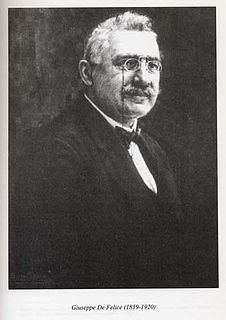
Giuseppe De Felice Giuffrida was an Italian socialist politician and journalist from Sicily. He is considered to be one of the founders of the Fasci Siciliani a popular movement of democratic and socialist inspiration. As the first socialist mayor of Catania in Sicily, from 1902 until 1914, he became the protagonist of a kind of municipal socialism.

Nicola Barbato was a Sicilian medical doctor, socialist and politician. He was one of the national leaders of the Fasci Siciliani a popular movement of democratic and socialist inspiration in 1891-1894, and perhaps might have been the ablest among them, according to the Marxist historian Eric Hobsbawm.

Napoleone Colajanni was an Italian writer, journalist, criminologist, socialist and politician. In the 1880s he abandoned republicanism for socialism, and became Italy's leading theoretical writer on the issue for a time. He has been called the father of Sicilian socialism. Due to the Socialist party's discourse of Marxist class struggle, he reverted in 1894 to his original republicanism. Colajanni was an ardent critic of the Lombrosian school in criminology. In 1890 he was elected in the national Italian Chamber of Deputies and was re-elected in all subsequent parliaments until his death in September 1921.
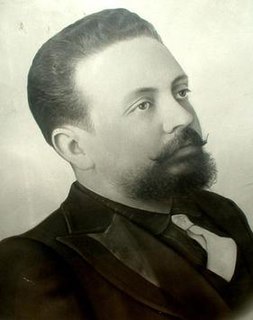
Bernardino Verro was a Sicilian syndicalist and politician. He was involved in the Fasci Siciliani a popular movement of democratic and socialist inspiration in 1891-1894, and became the first socialist mayor of Corleone in 1914. He was killed by the Mafia.

Lorenzo Panepinto was an Italian politician and teacher. He was the founder of the Fascio dei lavoratori in his hometown Santo Stefano Quisquina, editor of the newspaper La Plebe and member of the Comitato della Federazione Regionale Socialista. He was killed by the Sicilian Mafia.

The Caltavuturo massacre took place on January 20, 1893, in Caltavuturo in the Province of Palermo (Sicily), when during the celebration of Saint Sebastian, some 500 peasants returning from the symbolic occupation of 250 hectares of communal land were dispersed by soldiers and policemen, killing 13 and wounding 21 peasants. The claim for land reform was one of the demands of the Fasci Siciliani, a popular movement of democratic and socialist inspiration in 1891-1894.
General elections were held in Italy on 26 May 1895, with a second round of voting on 2 June. The "ministerial" left-wing bloc remained the largest in Parliament, winning 334 of the 508 seats.
Events from the year 1893 in Italy.

The Lunigiana revolt took place in January 1894, in the stone and marble quarries of Massa and Carrara in the Lunigiana, the northernmost tip of Tuscany (Italy), in support of the Fasci Siciliani uprising on Sicily. After a state of siege had been proclaimed by the Crispi government, armed bands dispersed into the mountains pursued by troops. Hundreds of insurgents were arrested and tried by military tribunals.

Nicola Petrina was an Italian socialist and politician from Sicily. He was one of the national leaders of the Fasci Siciliani a popular movement of democratic and socialist inspiration in 1891-1894.

Agostino Lo Piano Pomar was a Sicilian lawyer, socialist and politician. He was one of the national leaders of the Fasci Siciliani a popular movement of democratic and socialist inspiration in 1891-1894.
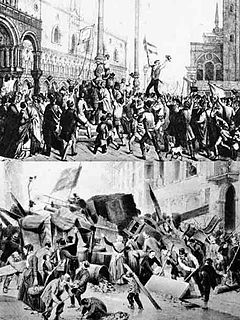
The Lercara Friddi massacre took place on Christmas-day 1893 in Lercara Friddi in the Province of Palermo (Sicily) during the Fasci Siciliani uprising. According to different sources either seven or eleven people were killed and many wounded.
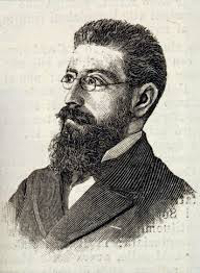
Giacomo Montalto was an Italian Republican-inspired socialist, politician and lawyer. He was one of the leaders of the Fasci Siciliani, a popular movement of democratic and socialist inspiration in 1891-1894.
Maria Cammarata, was a prominent female leader of the Fascio dei lavoratori in Piana dei Greci, part of the Fasci Siciliani movement. The role of women in the Fasci Siciliani was substantial, but is regularly overlooked in historical accounts.
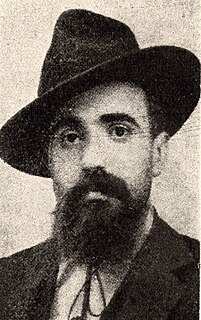
Giovanni Noè was an Italian lawyer, anarchist and politician, involved in the Fasci Siciliani, a popular movement of democratic and socialist inspiration in 1891-1894. He was elected in Italian Chamber of Deputies in 1900 and 1904.













